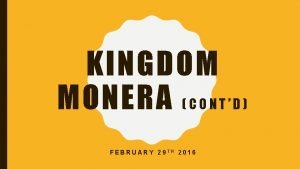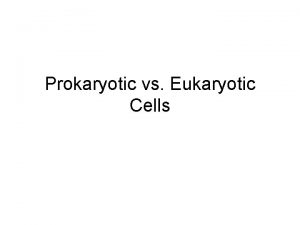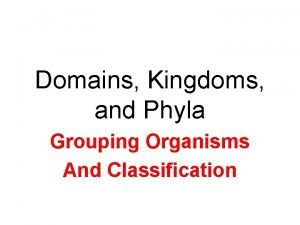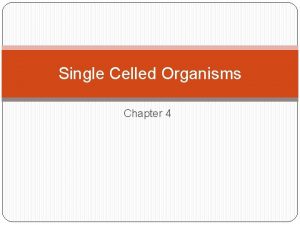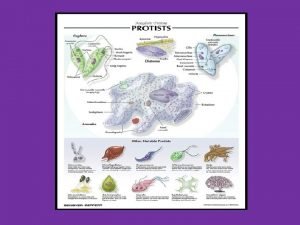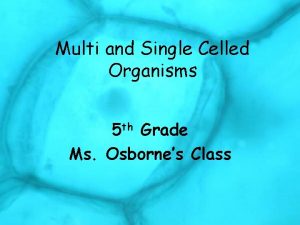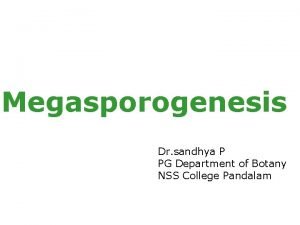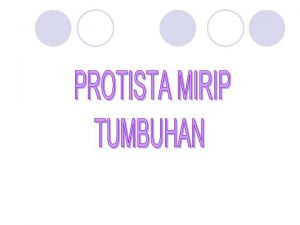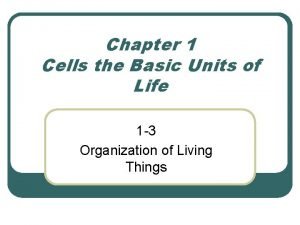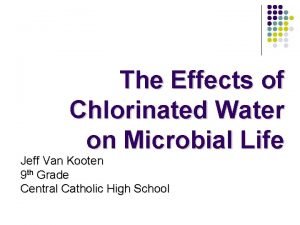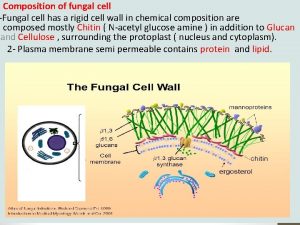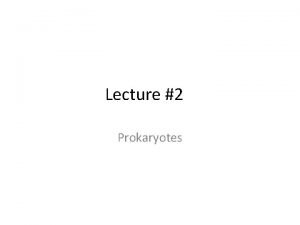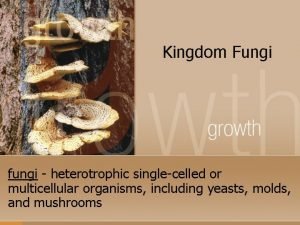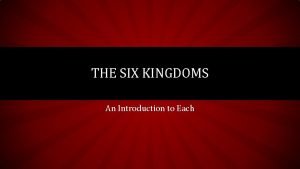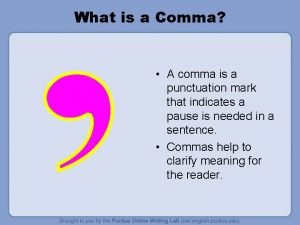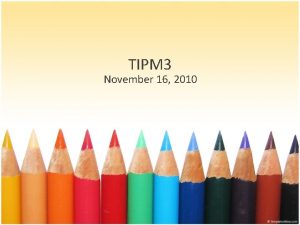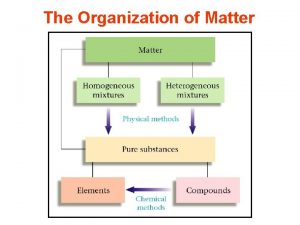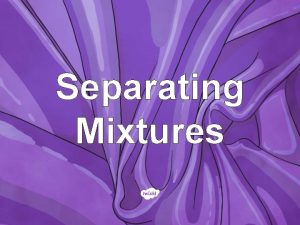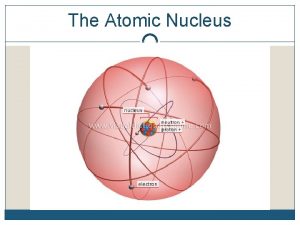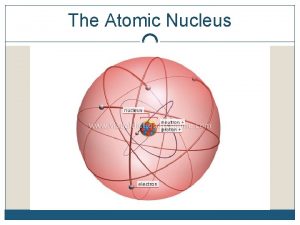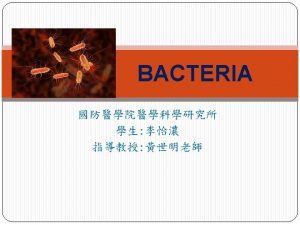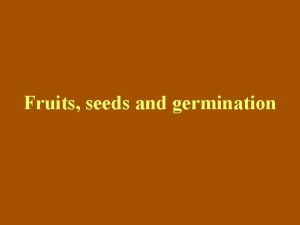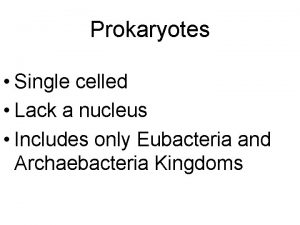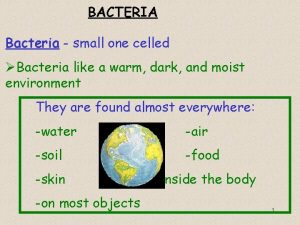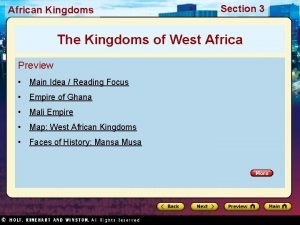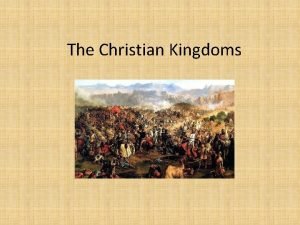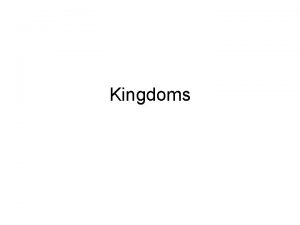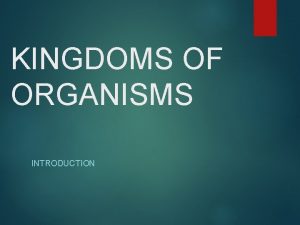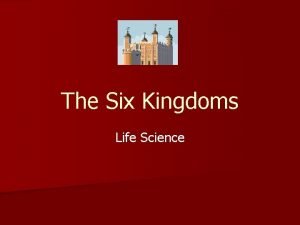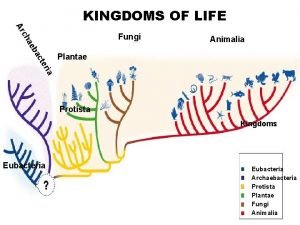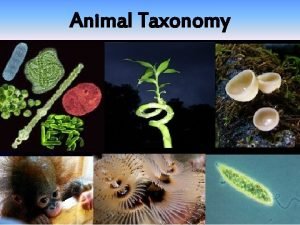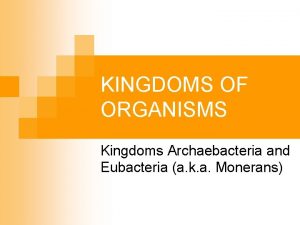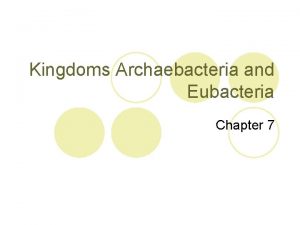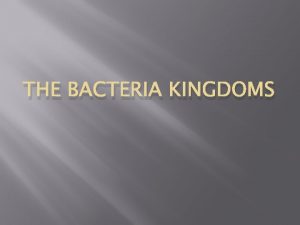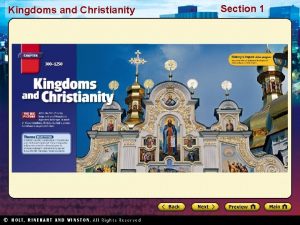5 Kingdoms Moneran One celled No separate nucleus
































- Slides: 32

5 Kingdoms

Moneran § One celled § No separate nucleus § Example: bacteria

Protist § Most one celled § Have nucleus and other cell structures § Examples: algae, amoeba

Fungus § § § Many celled Cannot move Absorb nutrients from other organisms § Examples: mushrooms, yeast, molds

Plant § § § Many-celled Cannot move Use energy from the sun to make sugars § Examples: trees, flowers, ferns

Animal § § § Many-celled Most can move Get energy by consuming other organisms § Examples: invertebrates, fish, birds, mammals

What makes a Plant? Plant Characteristics How are Plants Classified

Plant Characteristics § They make their own food § Chloroplasts contain chlorophyll § Chlorophyll absorbs energy from the sun § Plants use the energy to make food - glucose (sugar) § Process is called Photosynthesis

Plant Characteristics § Plant Cells have Cell Walls

What is a Cell Wall § a plant cell is surrounded by a rigid cell wall § outside of the cell membrane § helps support

What are the parts of a plant? § Flower This part makes seeds. § Stem This part carries food and water through the plant. § Leaf This part makes food for the plant. § Root This part carries water from the soil to the plant.

Kinds of plants § Edible You can eat it – fruit and vegetables *lettuce * carrots § Non-edible Don’t eat these *poison ivy

More kinds of plants § Flowering Plants that have flowers to attract insects. Non-Flowering Plants that don’t have flowers-only leaves. *ivy *ferns Conifers Plants that grow cones and do not lose their leaves. Decidious Plants that lose their leaves each fall.

Plant Parts and Functions

Parts of The Plant

Root Functions Roots have 4 primary functions 1. Absorption of water and nutrients 2. Transportation of water and nutrients to stem 3. Anchors plant 4. Store food and water

Functions of the Stem 1. Transports water and nutrients from roots to leaves 2. Supports leaves, fruits and flowers Highway

Leaves Kitchen Stomata Opening in epidermis where gas and water exchange

Important Functions of Leaves ÀPhotosynthesis Process that plants use to produce their food ÁTranspiration Loss of water and exchange of carbon dioxide

Fruit Classification Protection Nourishment mama

Fruit’s Function Seed protection

How are Plants Classified? v Simple v. Complex

Liverwort:

Plant Characteristics § Plants reproduce with spores Or § Seeds

How are Plants Classified? § Gymnosperms -- non-flowering plants § Angiosperms -- flowering plants

The Flower


Flower Parts Pistil Female part of plant Consists of: • Stigma • Style • Ovary

Flower Parts Stamen Male reproductive organ Consists of: • Anther • Stamen

Flower Parts Petals Highly colored part of the flower, may contain perfume and/or nectar glands

Flower Function Reproduction is the flowers sole function Pollination by: Wind Insects and Birds Fertilization:

Parts of the Seed *Embryo Growing part of seed baby Tissue that provides nutrition for the developing seed Food storage tissue *Seed coat Protective outer covering of the seed
 What are unicellular and multicellular organisms
What are unicellular and multicellular organisms Monera kingdom reproduction
Monera kingdom reproduction Organism whose cells contain a nucleus
Organism whose cells contain a nucleus Eubacteria examples with scientific names
Eubacteria examples with scientific names Single cell organism name
Single cell organism name One celled plantlike organisms that multiply rapidly
One celled plantlike organisms that multiply rapidly Prokaryotes that break down dead organisms
Prokaryotes that break down dead organisms Single celled protist
Single celled protist Unicellular and multicellular organisms 5th grade
Unicellular and multicellular organisms 5th grade Tetrasporic embryo sac diagram
Tetrasporic embryo sac diagram Alga uniseluler
Alga uniseluler What are three benefits of being multicellular
What are three benefits of being multicellular Single celled fungi
Single celled fungi Fungal cell wall
Fungal cell wall Prokaryotic reproduction
Prokaryotic reproduction Are fungi multicellular
Are fungi multicellular Archaebacteria
Archaebacteria Six kingdom classification
Six kingdom classification One god one empire one religion
One god one empire one religion One one one little puppy run
One one one little puppy run One king one law one faith
One king one law one faith Byzantine definition
Byzantine definition One ford behaviors
One ford behaviors See one do one teach one
See one do one teach one One price policy
One price policy One face one voice one habit and two persons
One face one voice one habit and two persons See one do one teach one
See one do one teach one Asean tourism strategic plan
Asean tourism strategic plan Asean one vision one identity one community
Asean one vision one identity one community Commas to separate adjectives
Commas to separate adjectives Separate result unknown
Separate result unknown What is this process called
What is this process called How to separate raisins and flour
How to separate raisins and flour

